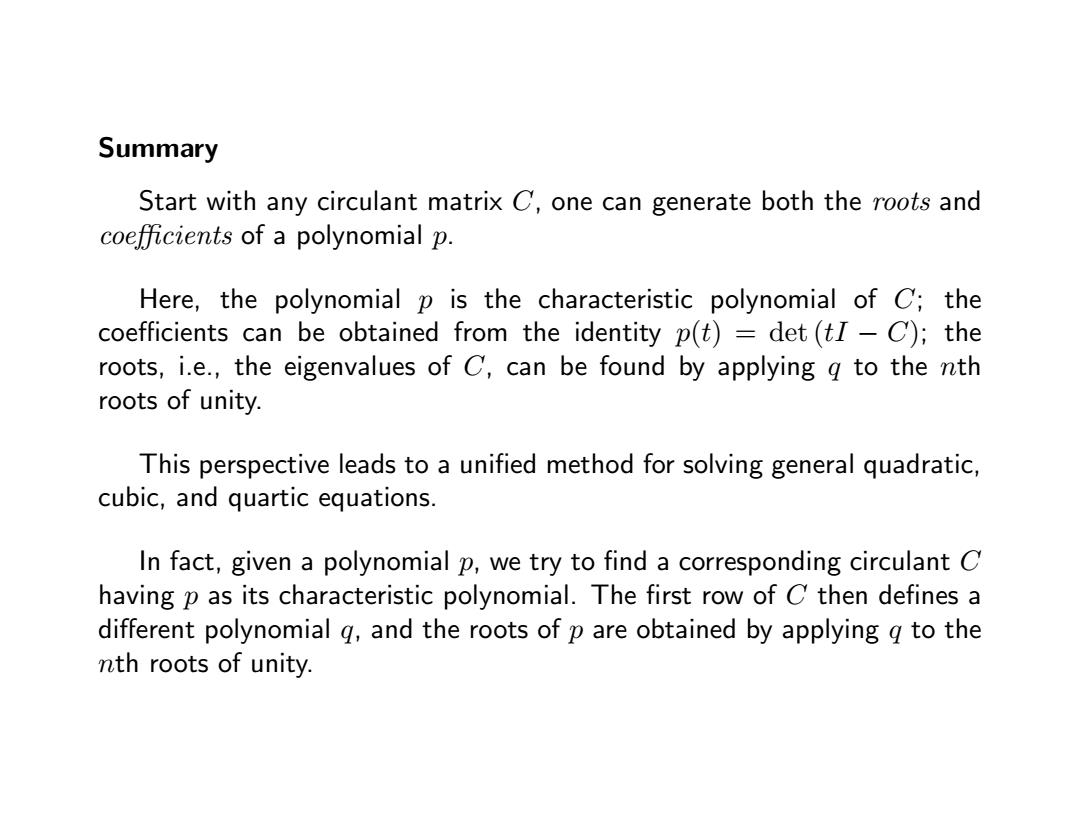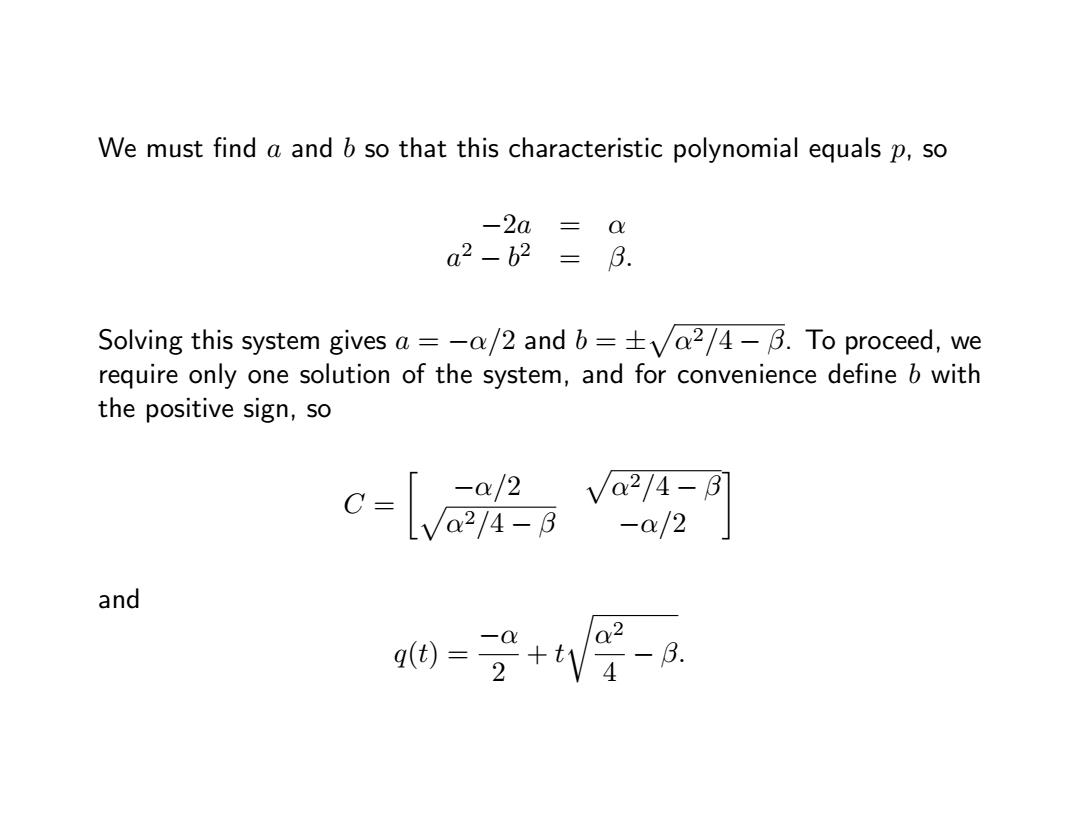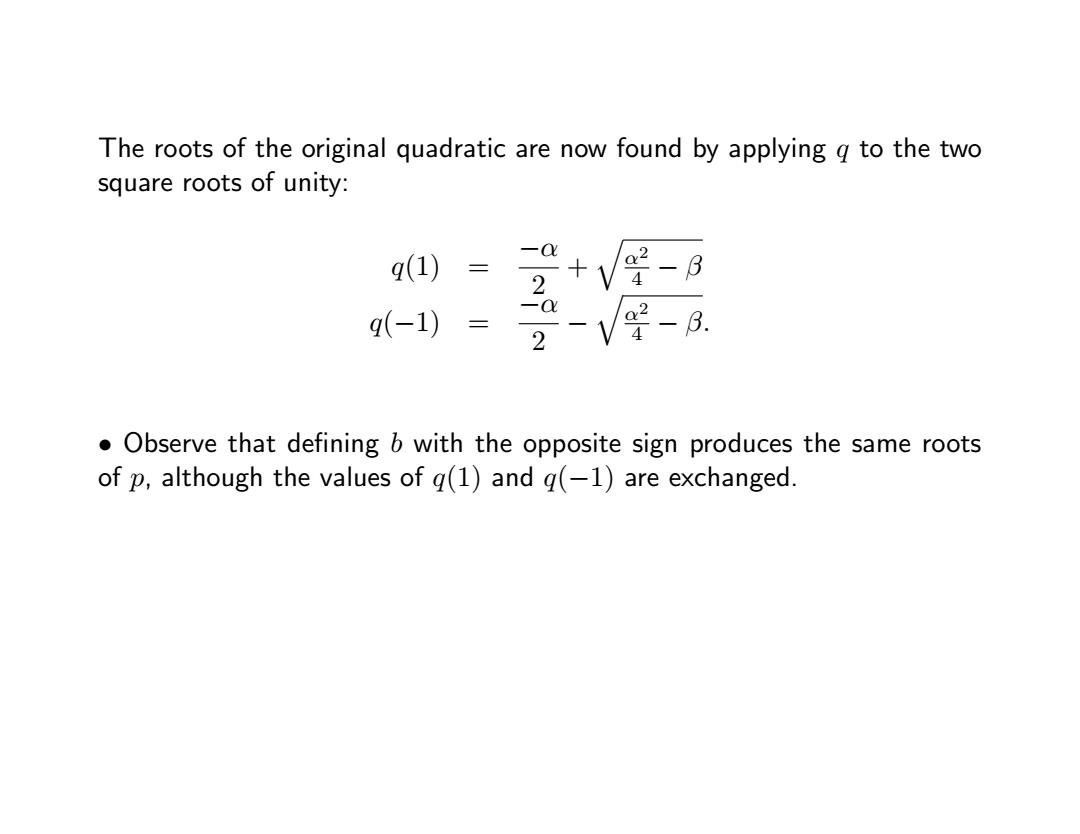
Summary Start with any circulant matrix C,one can generate both the roots and coefficients of a polynomial p. Here,the polynomial p is the characteristic polynomial of C;the coefficients can be obtained from the identity p(t)=det(tI-C);the roots,i.e.,the eigenvalues of C,can be found by applying g to the nth roots of unity. This perspective leads to a unified method for solving general quadratic, cubic,and quartic equations. In fact,given a polynomial p,we try to find a corresponding circulant C having p as its characteristic polynomial.The first row of C then defines a different polynomial g,and the roots of p are obtained by applying g to the mth roots of unity
Summary Start with any circulant matrix C, one can generate both the roots and coefficients of a polynomial p. Here, the polynomial p is the characteristic polynomial of C; the coefficients can be obtained from the identity p(t) = det (tI − C); the roots, i.e., the eigenvalues of C, can be found by applying q to the nth roots of unity. This perspective leads to a unified method for solving general quadratic, cubic, and quartic equations. In fact, given a polynomial p, we try to find a corresponding circulant C having p as its characteristic polynomial. The first row of C then defines a different polynomial q, and the roots of p are obtained by applying q to the nth roots of unity

Solving polynomial equations using circulant matrices. Quadratics.Let's consider a general quadratic polynomial, p(t)=t2+at+B. We also consider a general 2 x 2 circulant c- The characteristic polynomial of C is dt【-b=-2a+a2-
Solving polynomial equations using circulant matrices. Quadratics. Let’s consider a general quadratic polynomial, p(t) = t 2 + αt + β. We also consider a general 2 × 2 circulant C = · a b b a¸ . The characteristic polynomial of C is det · t − a −b −b t − a ¸ = t 2 − 2at + a 2 − b 2

We must find a and b so that this characteristic polynomial equals p,so -2a a2-b2=B. Solving this system gives a=-a/2 and b=+a2/4-B.To proceed,we require only one solution of the system,and for convenience define b with the positive sign,so -a/2 and
We must find a and b so that this characteristic polynomial equals p, so −2a = α a 2 − b 2 = β. Solving this system gives a = −α/2 and b = ± p α2/4 − β. To proceed, we require only one solution of the system, and for convenience define b with the positive sign, so C = · −α/2 p α2 p /4 − β α2/4 − β −α/2 ¸ and q(t) = −α 2 + t r α2 4 − β

The roots of the original quadratic are now found by applying g to the two square roots of unity: q(1) 2 7 -8 q(-1)= -V- Observe that defining b with the opposite sign produces the same roots of p,although the values of g(1)and g(-1)are exchanged
The roots of the original quadratic are now found by applying q to the two square roots of unity: q(1) = −α 2 + q α2 4 − β q(−1) = −α 2 − q α2 4 − β. • Observe that defining b with the opposite sign produces the same roots of p, although the values of q(1) and q(−1) are exchanged

Cubics.A parallel analysis works for cubic polynomials. We first notice that by simple algebra,for p(x)=x"+an-1xT-1+ ...+a1x+ao,the substitution y =x-an-1/n eliminates the term of degree n-1. Therefore,we only need to consider cubic polynomials of the form p(t)=t3+3t+Y. For a general 3 x 3 circulant matrix Ta b c C= a ca b we want to find a,b,and c so that p is the characteristic polynomial of C
Cubics. A parallel analysis works for cubic polynomials. We first notice that by simple algebra, for p(x) = x n + αn−1x n−1 + · · · + α1x + α0, the substitution y = x − αn−1/n eliminates the term of degree n − 1. Therefore, we only need to consider cubic polynomials of the form p(t) = t 3 + βt + γ. For a general 3 × 3 circulant matrix C = a b c c a b b c a , we want to find a, b, and c so that p is the characteristic polynomial of C